GDude (James Liu) and a large bonito from the Cabrillo Mole in Avalon
Mackerel and Tuna—Family Scombridae
Pacific Bonito
Species: Sarda chiliensis (Cuvier, 1832); from the Greek word sarda (an ancient name for a European species of bonito) and chiliensis (in reference to Chile, South America, where the species was first recognized).
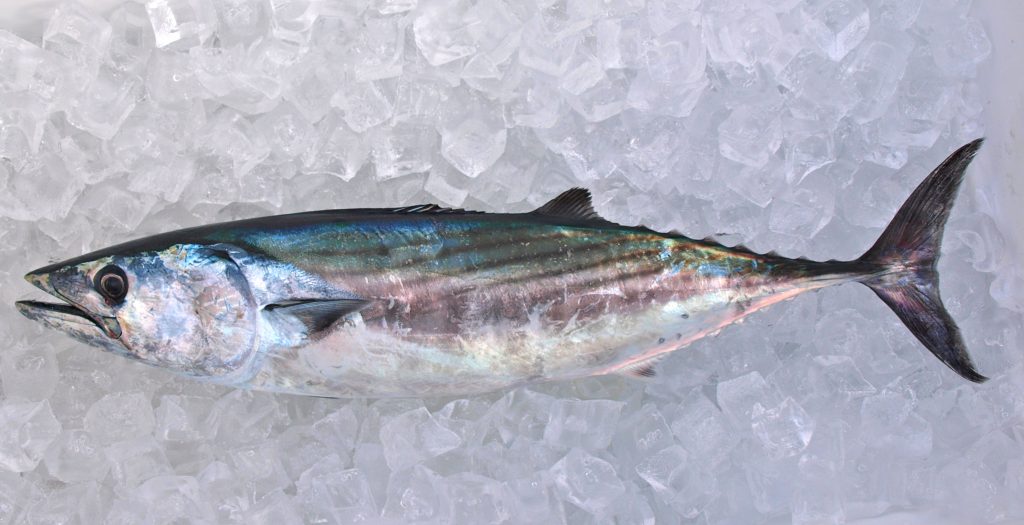
Alternate Names: Most commonly called bonehead but also given the names bone, boner, bonefish, flasher, bongo, magneto, and micronito (small bonito). In the past often called “poor mans tuna,” striped tuna, little tuna and, derisively, Laguna tuna. One of my favorites names—from the PFIC Message Board—Mr. Bojangles. Called bonito del Pacífico oriental in Mexico.
Identification: Tuna-shaped, elongated and pointed at both ends; a series of 6 to 8 finlets that follow the second dorsal fin and anal fin. Coloring dark blue above with greenish reflections and a metallic luster shading into silver below with several dark oblique lines on the back.
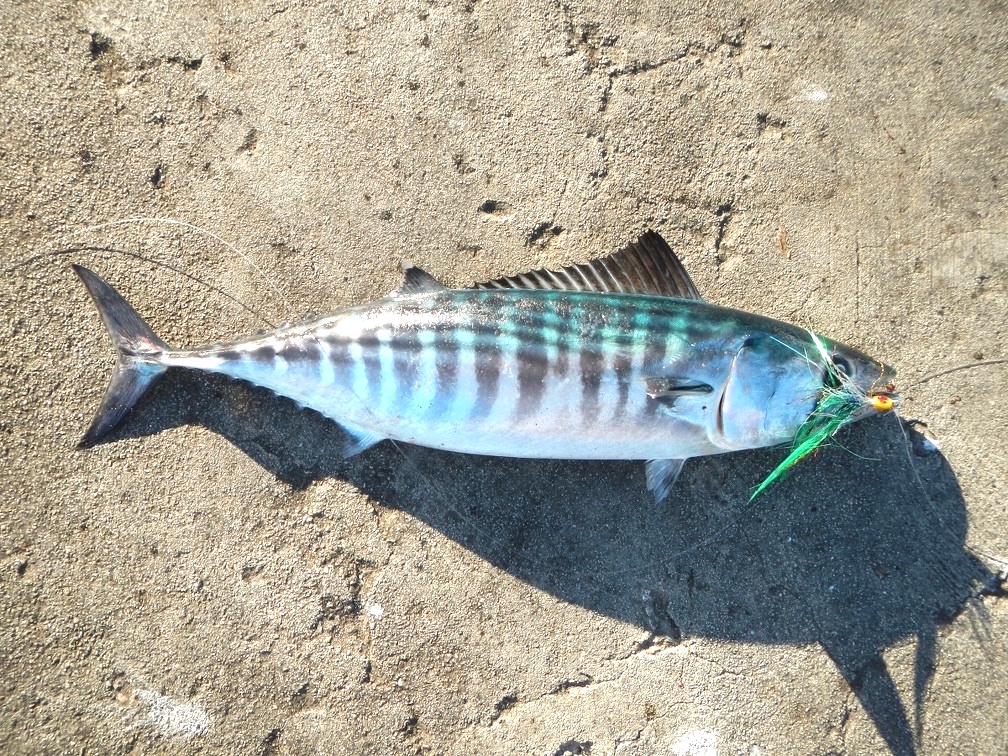
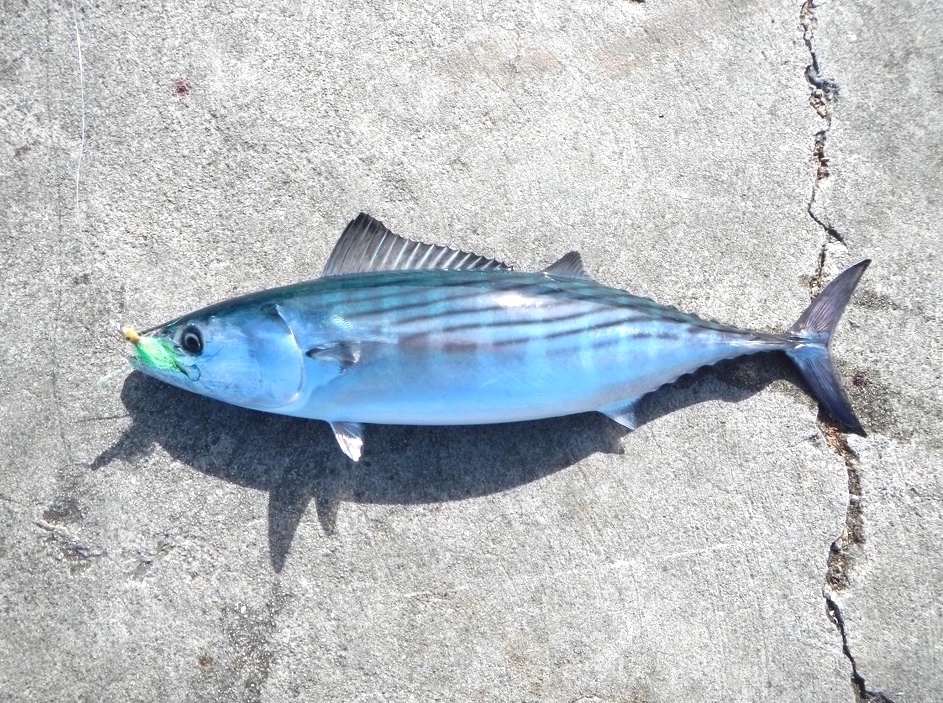
Size: To 48 inches although most caught from piers are less than 24 inches. For years the California record fish was listed as a fish that was caught in Malibu Cove in 1978 with a weight of 22 lb 3 oz. Today the record is listed as a 21 lb 5 oz. fish taken at the 181 Spot in 2003. I’m not sure why the new, lighter fish is the record. The diving record is for a 10 Lbs 4 oz fish taken at Catalina Island in 1967
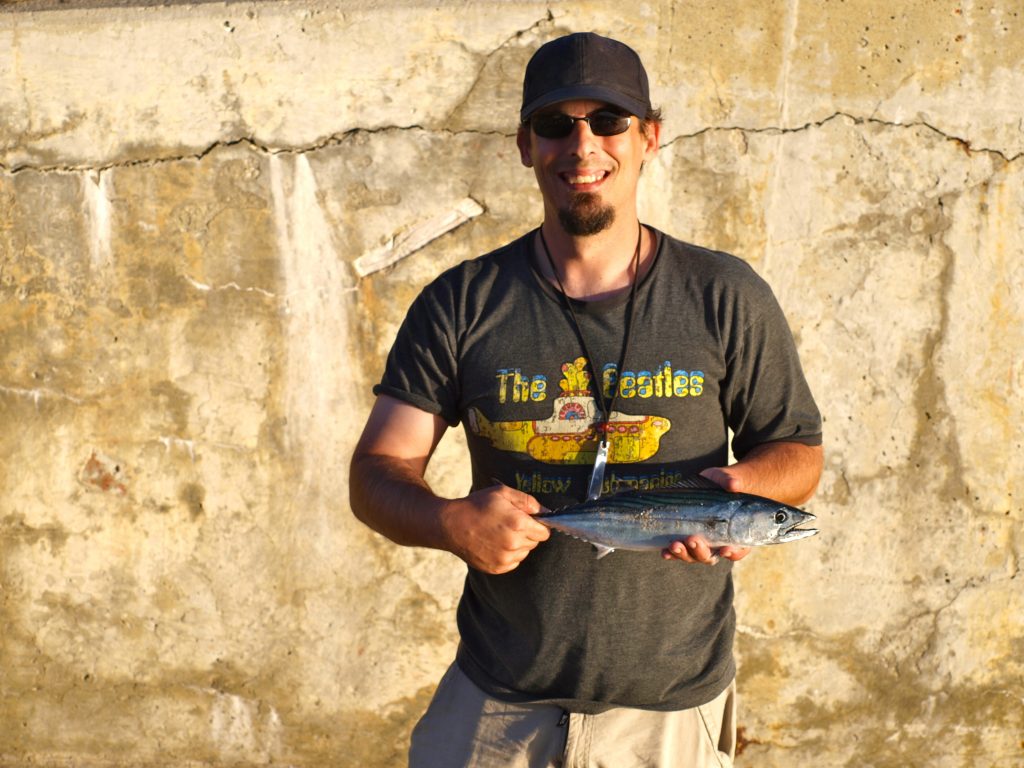
Range: There are two subspecies. One, the northern population, Sarda chiliensis lineolata, is found from southern Baja California, including Islas Revillagigedo and Gulf of California to Copper River, Gulf of Alaska. The southern population, Sarda chiliensis chiliensis, is found in the subtropical eastern Pacific, Máncora, Peru to Talcahuano, Chile. Most years the northern subspecies is common from Mexico into southern California. However, during El Niño, warm-water conditions, they are sometimes found as far north as Washington and Vancouver Island, British Columbia. In the El Niño year of 1983, while fishing off of Elk in Mendocino County, northern California, I witnessed several large bonito, all over ten pounds, being caught by anglers trolling for salmon.
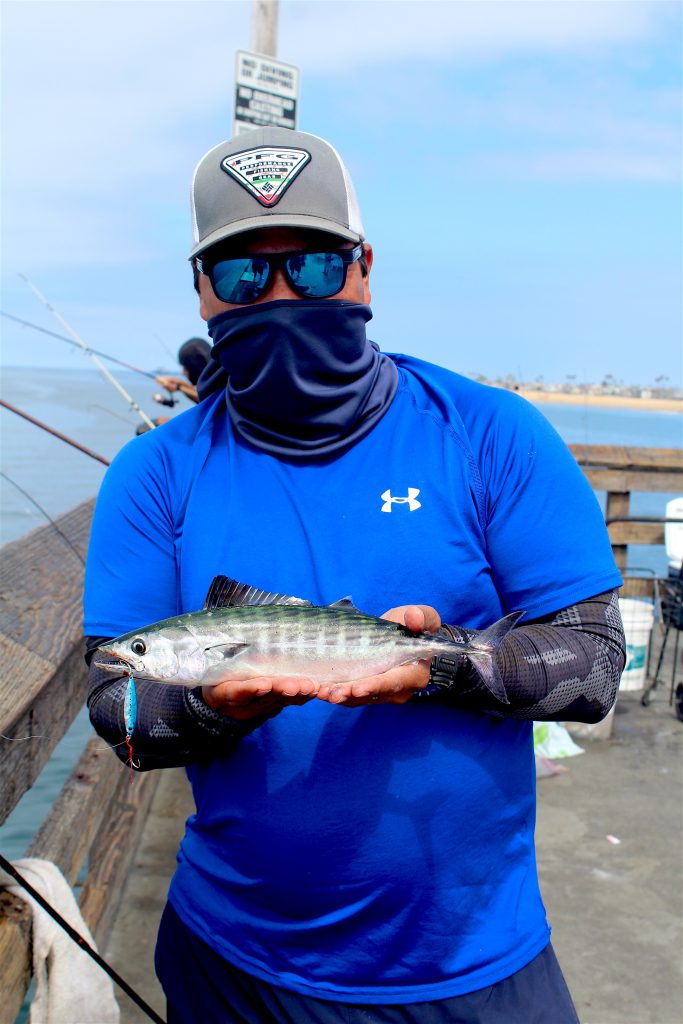
Habitat: Nearshore epipelagic (upper open ocean) from the surface down to a recorded depth of 361 feet. Also enters bays, especially those with warm water outlets.
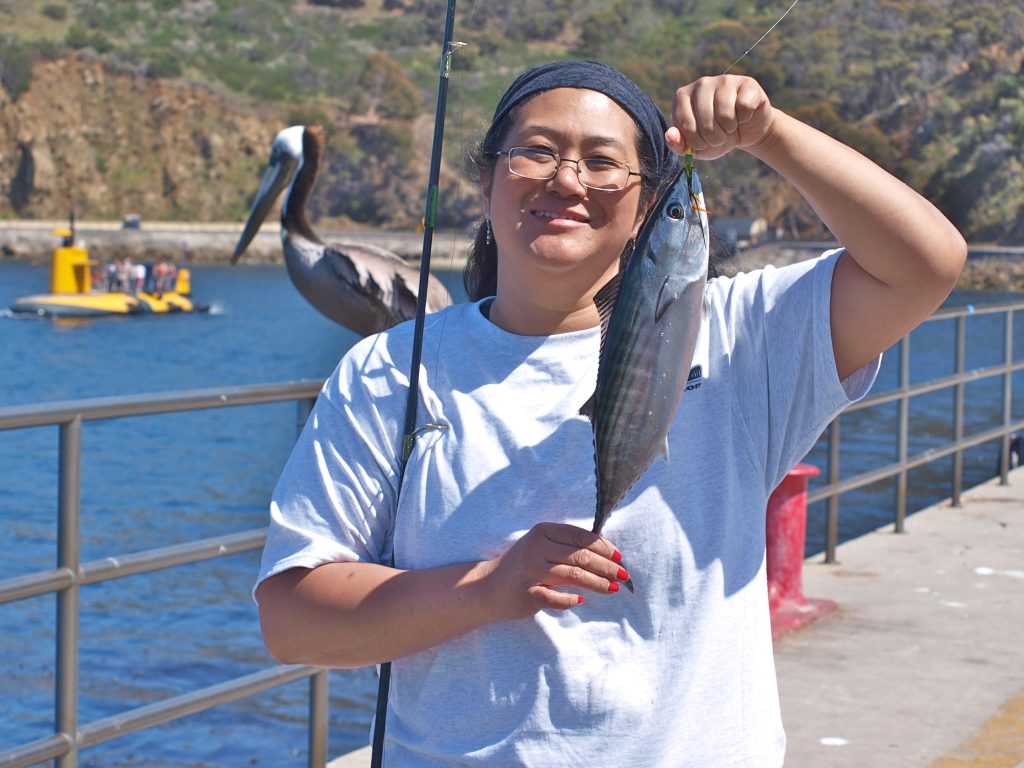
Piers: Common at many southland piers during and after warm-water years, both those in bays and those at oceanfront spots. Best bets: Ocean Beach Pier, Oceanside Pier, San Clemente Pier, Balboa Pier, Newport Pier, Cabrillo Mole (Avalon)—#1, Redondo Beach Pier, Redondo Sportfishing Pier (when open) and the Hermosa Beach Pier. Stearns Wharf (Santa Barbara) and Goleta Pier can be decent some years, especially in the fall.
We even received notice one day of a 5-pound bonito being caught at the Pacifica Pier by Salty Nick. It was during one of the El Niño years (while others were catching salmon).
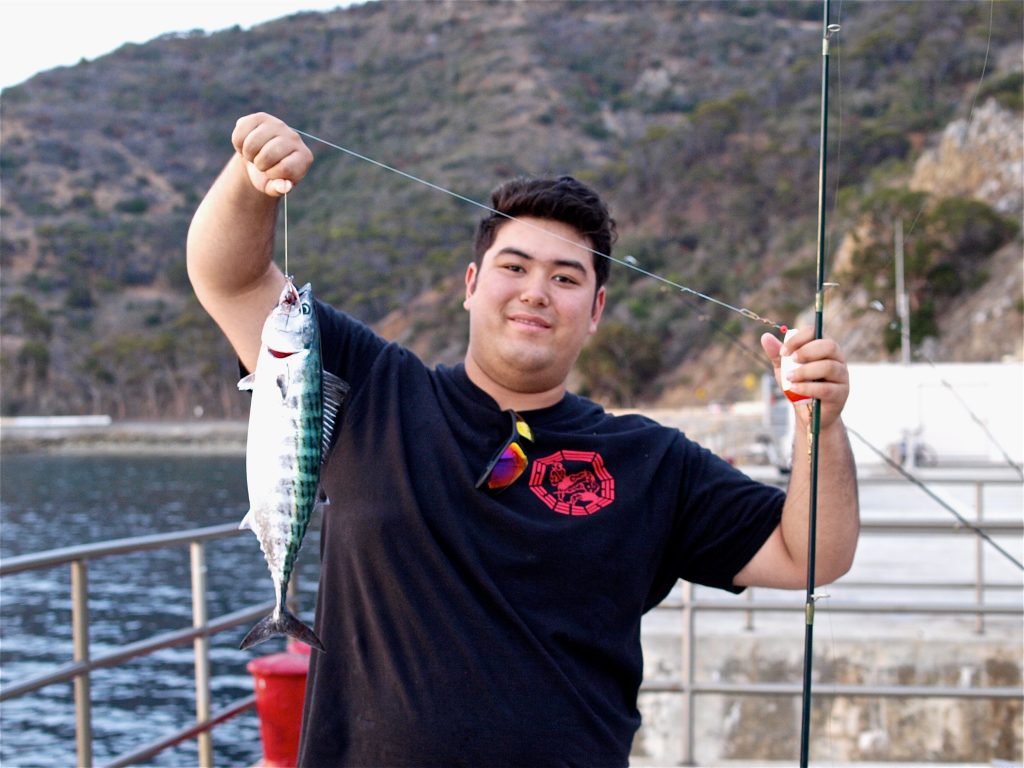
Shoreline: Sometimes taken by shore anglers fishing from jettys in southern California, especially the jetty at Redondo Beach.
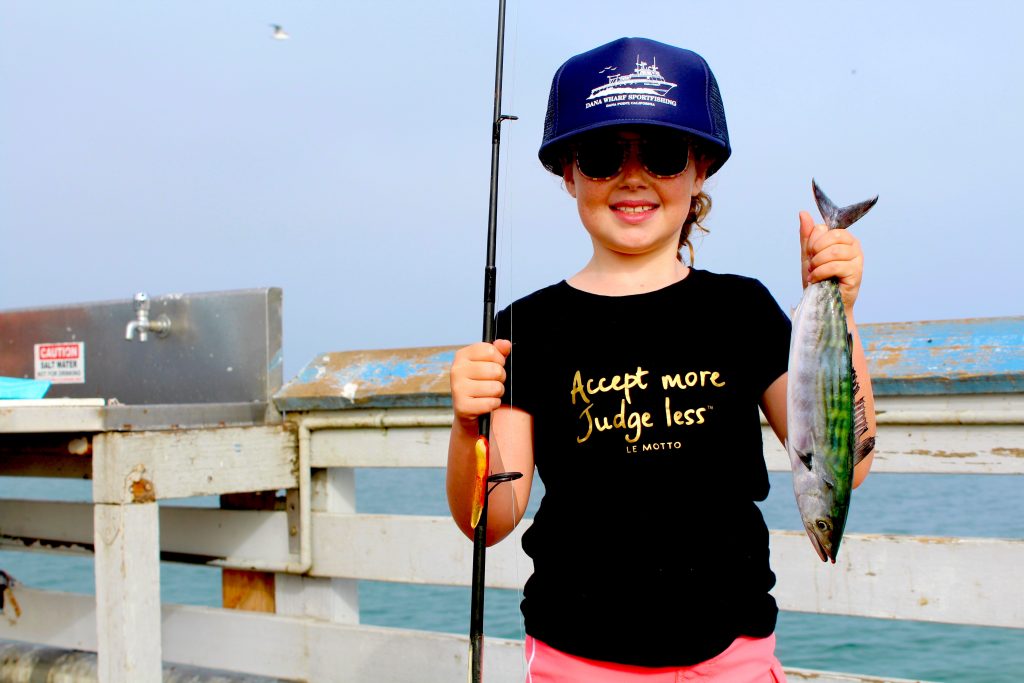
Boats: One of the favored boat species although the numbers can show a drastic change year-to-year depending upon water temperature.
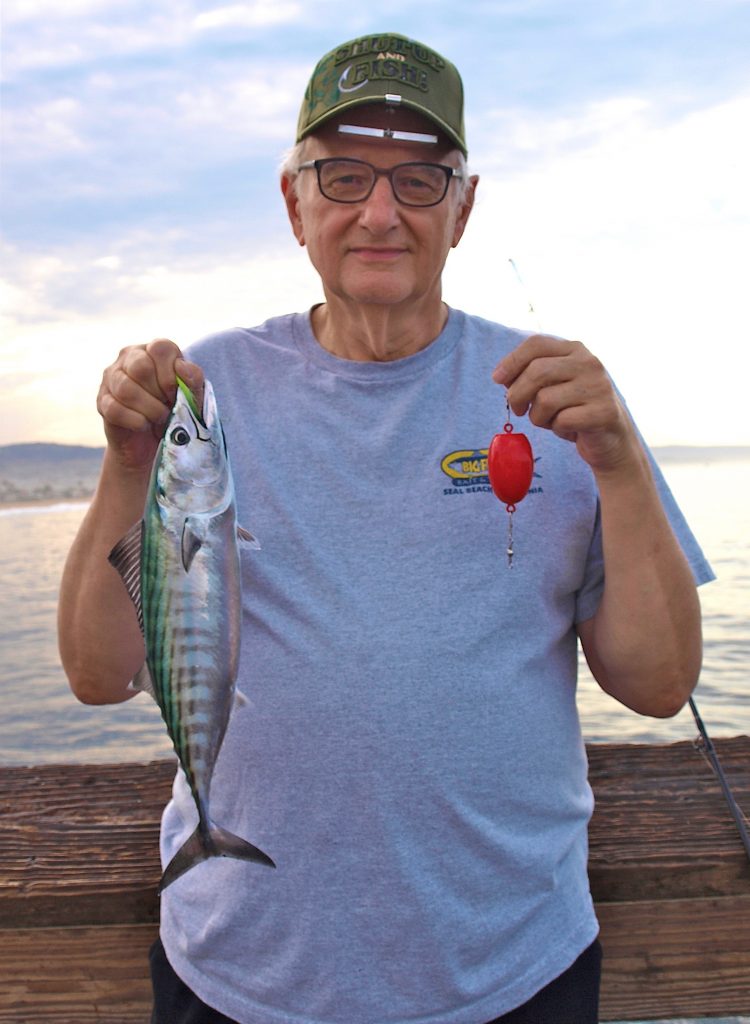
Bait and Tackle: Bonito primarily feed on fish and squid and are taken on a variety of baits and lures. The best bait is live anchovies or small sardines fished on a sliding leader or with a cast-a-bubble. For years the best lure was considered to be a bonito feather affixed to either a cast-a-bubble, a wooden float, a Styrofoam float, or a golf ball—the bubble/float/golf ball causes commotion on the surface, which attracts the bonito and keeps the lure near the top. Today a wide variety of spoons and jigs, i.e., MegaBaits and Jigpara, have also proven effective.
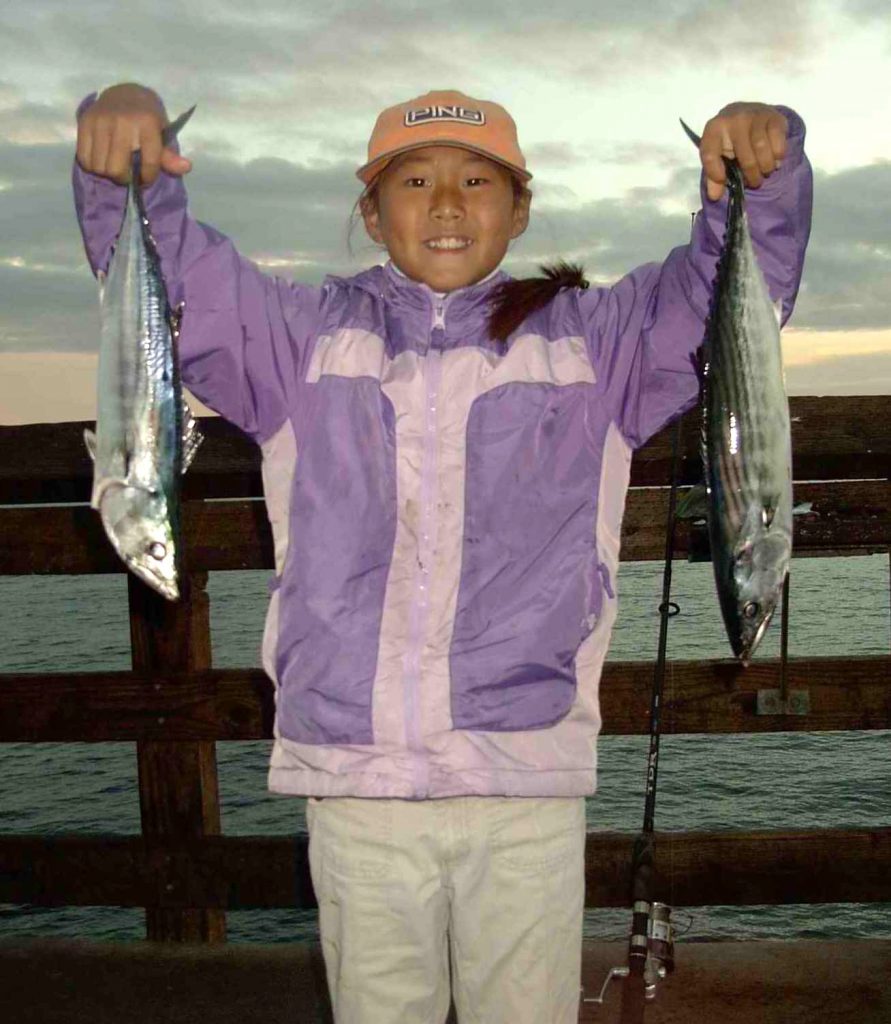
Food Value: Bonito are considered moderate in flavor, with large flakes, a dense texture and moderate fat content. However, that description is based on proper preparation. For best results they require cleaning soon after capture. If bled quickly, or even better if filleted and then put on ice, the flesh can be quite tasty. However, if allowed to warm up in a gunnysack on the nice hot surface of a pier the flesh can be almost inedible (which is true with many fish). Some parts of the flesh are dark colored—bloody and strong flavored. Remove those parts of the flesh unless you desire them for smoking. Given the relatively high oil content of the flesh, the best cooking methods are broiling or bar-b-cuing the meat; the worst are methods like deep-frying that would add more oil. In addition, smoked bonito and pickled bonito are also very good.
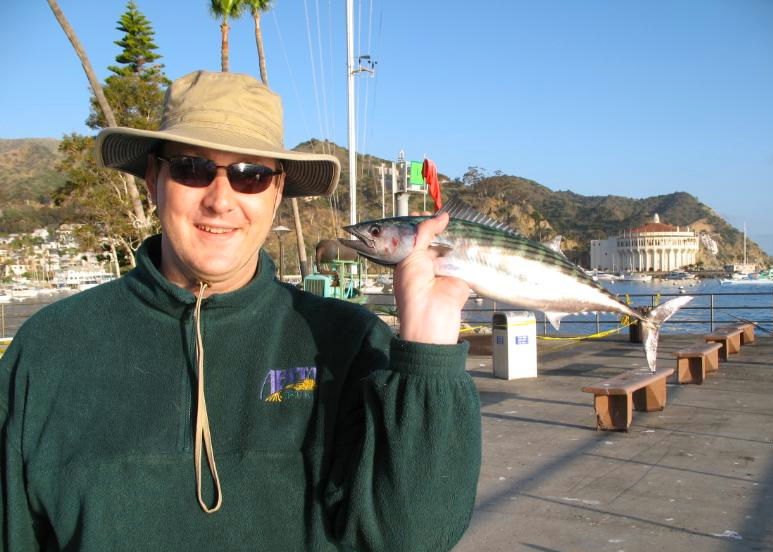
When I was young, and lived in San Diego, I would often go out on the half-day boats to catch some bonito. Most of the bonito (in the gunnysacks) would wind up as fertilizer for my mom’s roses. However, a couple of the cooks on the boats would cook up some of the fresh-caught fish. A favorite method was to cut thin slices of meat from the head of the bonito (up behind the eyes) and then lightly cook the slices on a grill using just a little butter. Flavored with soy sauce, it was delicious.
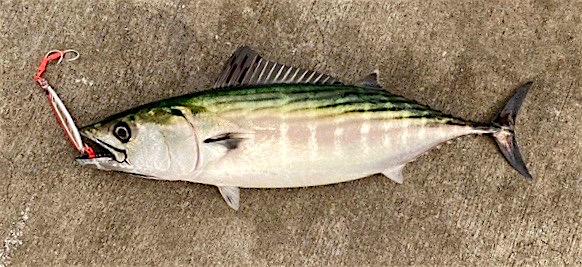
Today, given that we’ve all become gourmands, we would probably serve the thin slices raw as sashimi and include a little dipping sauce, i.e., wasabi paste and soy sauce draped over a daikon radish. One recommended dipping sauce even includes fish flakes from bonito, it’s a sauce made from shōyu (a type of soy sauce), mirin (a sweet cooking wine) and the bonito flakes.
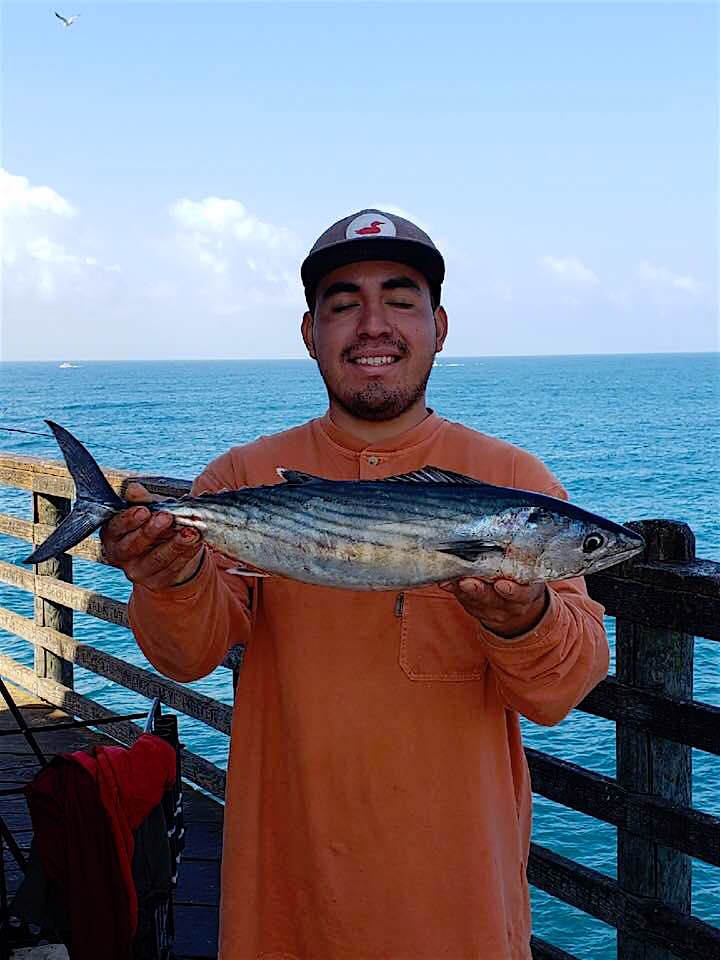
Comments: Many people feel that bonito are among the strongest fighting fish, pound for pound, in the sea. For many years the place to go for bonito was the Redondo Sportfishing Pier in Redondo Harbor. This was especially true during the colder-weather winter months. That narrative was altered when the nearby power plant changed ownership and changed procedures. Instead of always being on, and sending a steady stream of hot water into the harbor (where it emerged at the famous “bubble hole”), it became a sporadic occurrence. Visitors never knew when the hot water, or the bonito, would be showing up. Locals learned to check out the tall towers to see if they were emitting smoke. If they were, the hot water would be bubbling up in the harbor and bonito probably would be present. Today the pier is closed but hopefully will be rebuilt. Many also hope the warm water will return to the harbor.
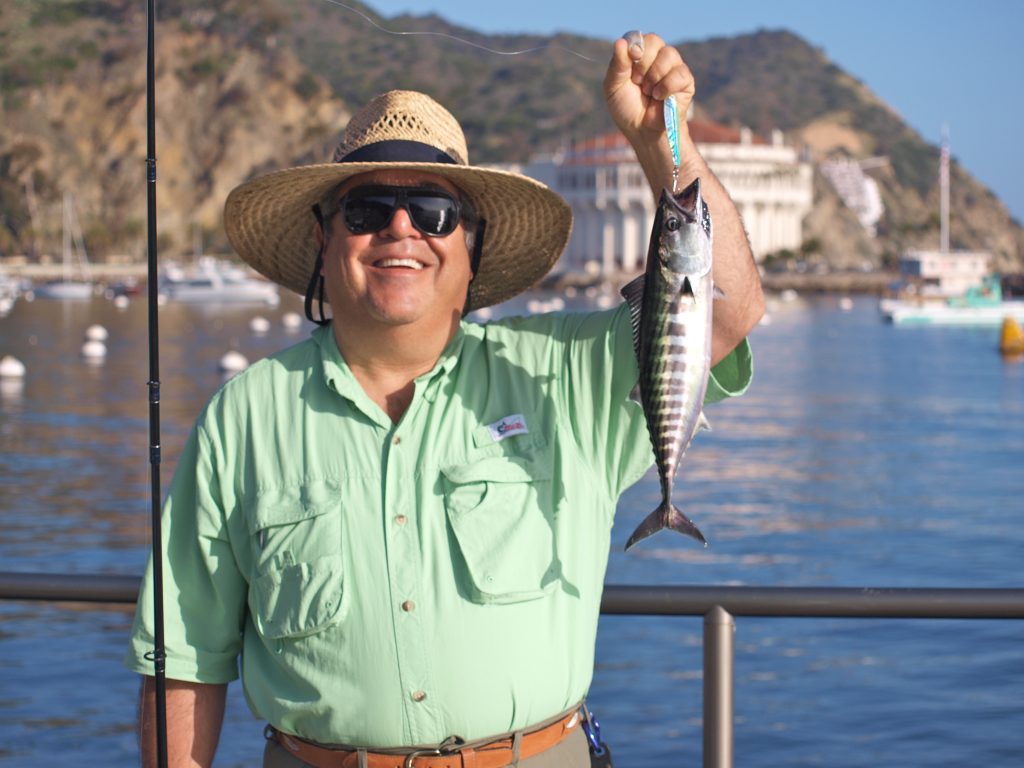
Bonito or bonita? The correct spelling is bonito but a surprisingly high number of people over the years, including journalists and writers who should know better, have used bonita as the moniker for these fish. One day on the Pier Fishing in California message board someone said his daughter had been called a bonito and she got upset until someone told her that the name meant pretty in Spanish. People then chimed in that she should have been called a bonita since that was the feminine name and bonito was the masculine name. As for the fish, given the strong, powerful fight they typically put up, I think I will stick with bonito as the name.
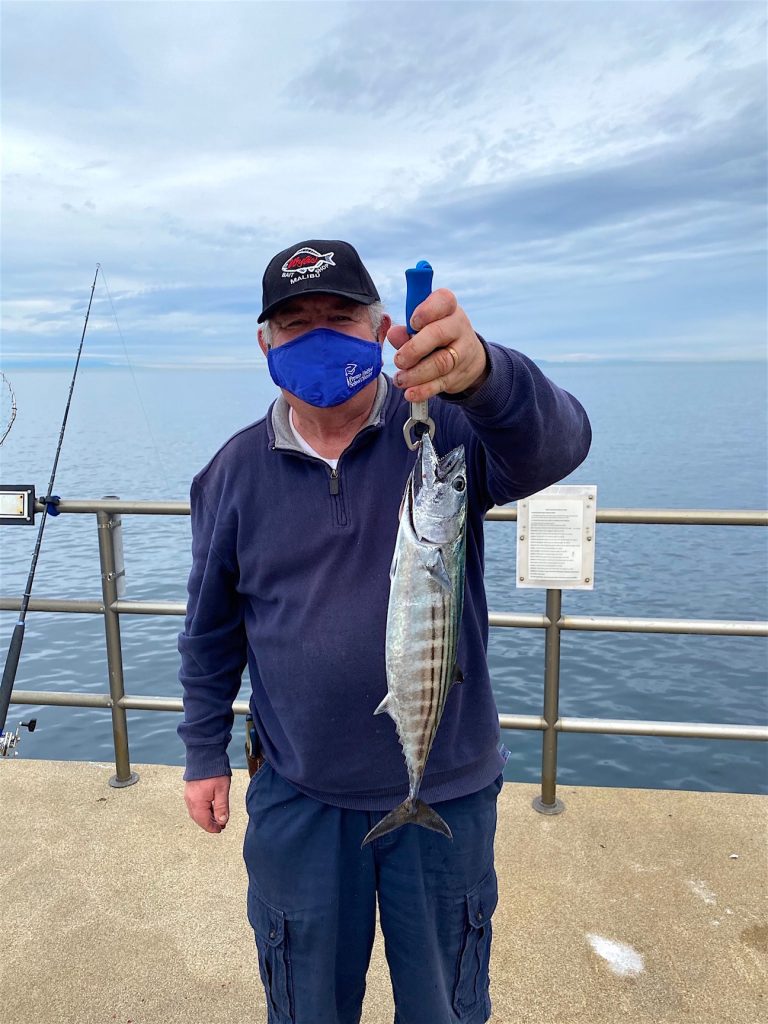
In my mind, bonito are another example of a crepuscular species that is primarily active during twilight, i.e., dawn and dusk. Often there is an early morning and early evening bite while the daytime action is slow.
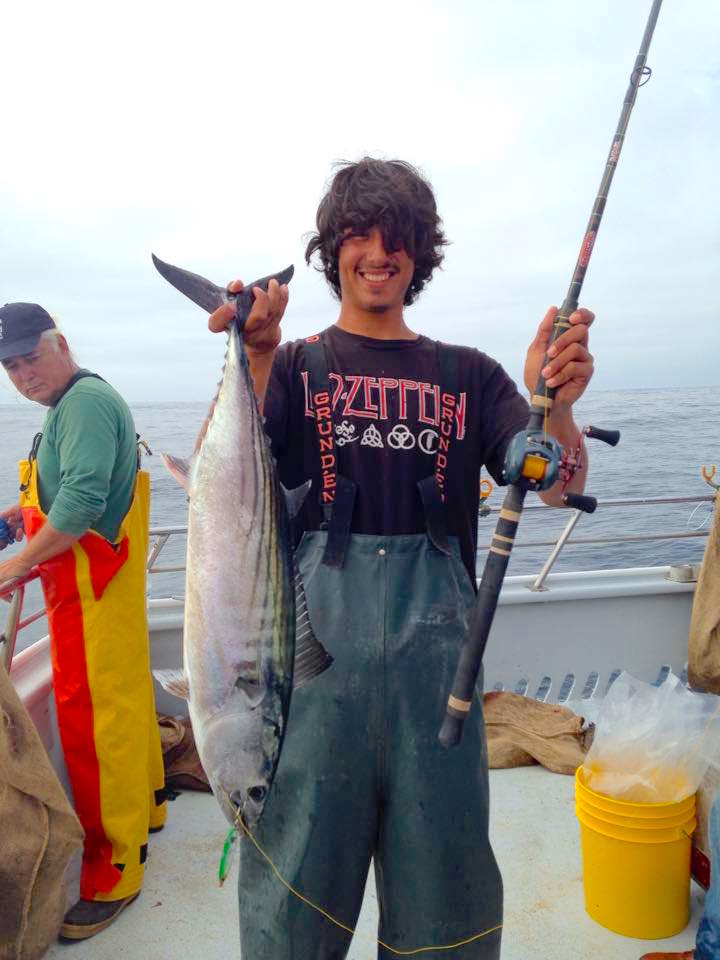
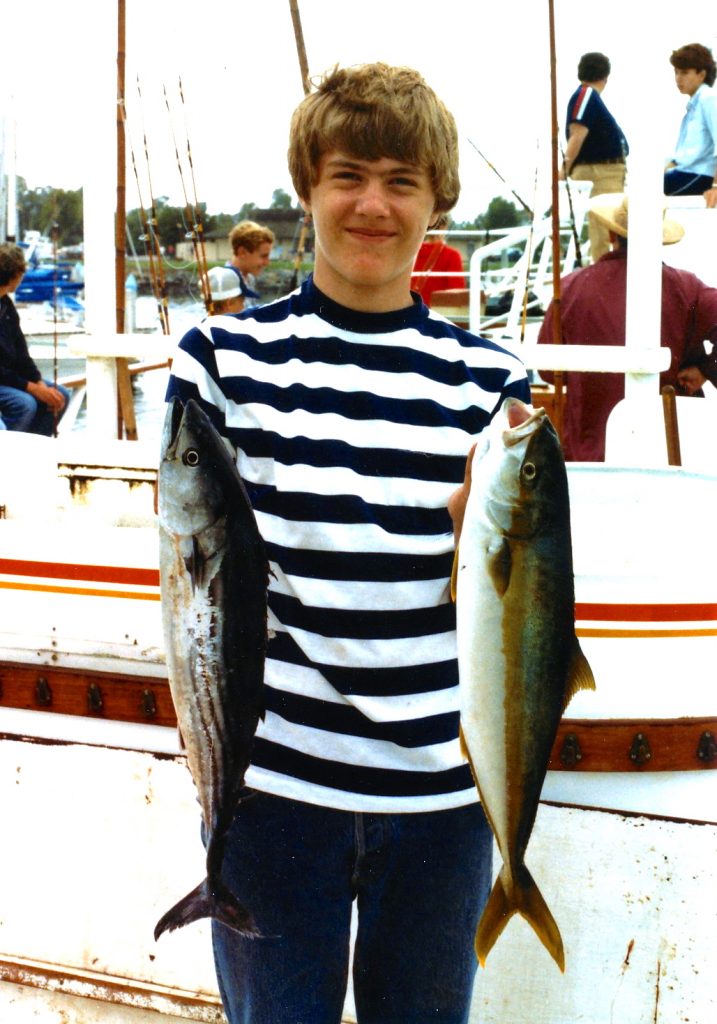
My son Mike and his first bonito (along with a yellowtail) caught on the boat New Seaforth while fishing in the La Jolla kelp bed
Some large bonito caught from piers
11 ¾ Lbs. — Oceanside Pier, Data lost on person and date; Source: Oceanside Pier Bait and Tackle
10 Lb. 7 oz. — Balboa Pier, Joe Imbriano, May 5, 1996; Source: Joe Imbriano/PFIC
10 Lbs. — Ocean Park Pier, I. L. Noyes, May 31, 1908; Source: Los Angeles Herald, May 31, 1908
≈ 10 Lbs. — Balboa Pier, September 2018; Source: Snookie/PFIC
9 Lbs. 14 oz. — Belmont Pier, Jerry Summerfelt, September, 1966; Source: Long Beach Independent, September 22, 1966
9 Lbs. 13 oz. — Seal Beach Pier, Howard F. Laston, September, 1966 ; Source: Long Beach Independent, September 22, 1966
9 Lbs. 8 oz. — Seal Beach Pier, September 1966; Source: Long Beach Independent, September 22, 1966
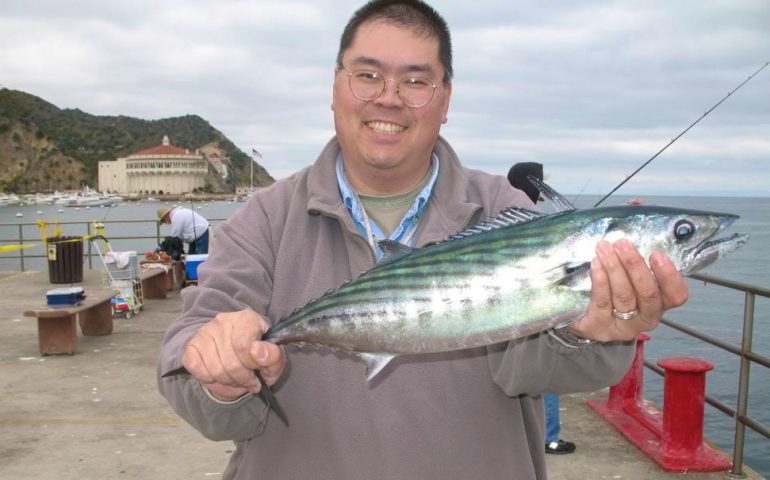
I used a spicy tuna recipe and swapped it out with bonito, and it was absolutely delicious. It tastes great sashimi style in my opinion!
[…] Bait and Tackle: Bonito primarily feed on fish and squid and are taken on a variety of baits and lures. The best bait is live anchovies or small sardines fished on a sliding leader or with a cast-a-bubble. via […]
I used to fish off of Stearns wharf in Sanra Barbara back in the early to mid 80’s. It was not uncommon for Bonito to start a “feeding frenzy” not to far from the pier. I once caught one that weighed about 16 pounds. For me, Bonito was strictly a catch and release species. But man, I loved how they fought.
So what is the season for Bonito?
Bonito can be caught all year round.
Year round.
Fishing is great
Used to get them off the rocks in Redondo using bubble and feathers and crocodile spoons. They were all in the 5-7 lbs range
Man, I have to get on more Bonito from shore… this is the year! There’s also some great info about the species here https://marinespecies.wildlife.ca.gov/pacific-bonito/true/ (a couple great nuggets)
People then commented that since bonita was the feminine name and bonito was the male, she should have been called that.
I have no doubt that this experience is absolutely incredible!
These fish are so fun to catch. My fav.
Freecine is a free app that lets you watch movies, TV shows, and live channels anytime.
I once caught one that weighed about 16 pounds.
What recipe do you make for this kind of fish?
I slice the fish into thin steaks or filets, season it and sear it on both sides and make burger style sandwiches on brioche buns- garnish with flavored mayo or thousand island dressing lettuce ,tomato and onion. Bonito tastes like a mild flavored tuna, It’s delicious
This is awesome! It’s a very informative post.
cumparpermisdeconducere
* vreau sa cumpar permis de conducere original
/cumpara-permis-de-conducere/
Yay! I will send my entry photo with my caught Pacific Bonito!